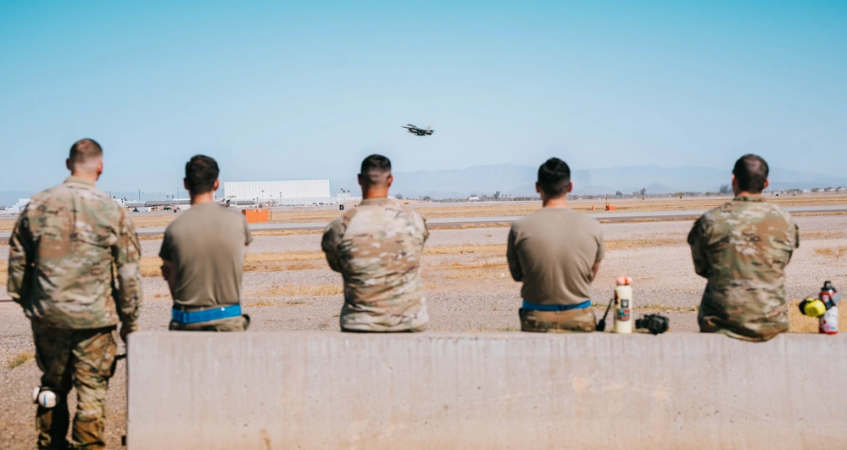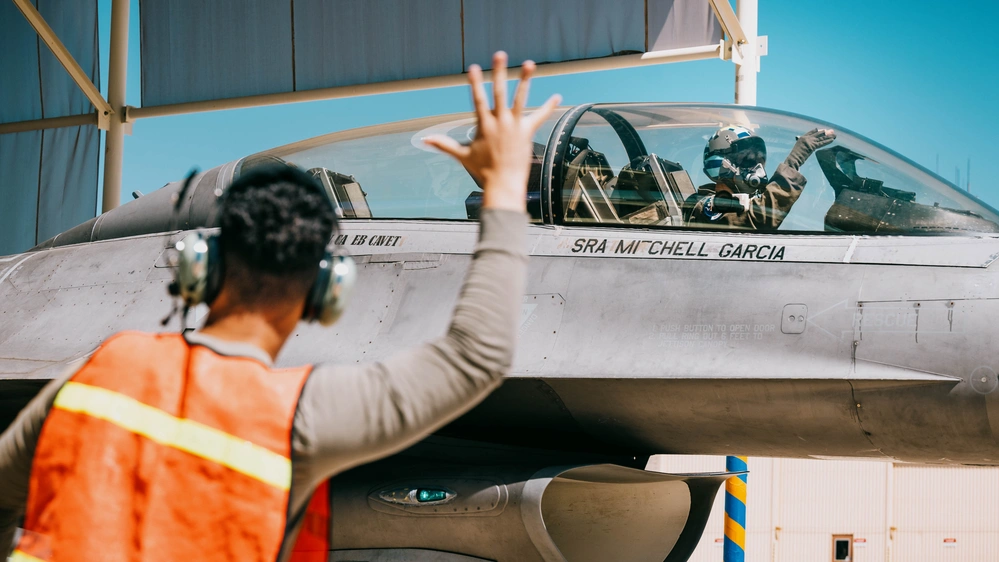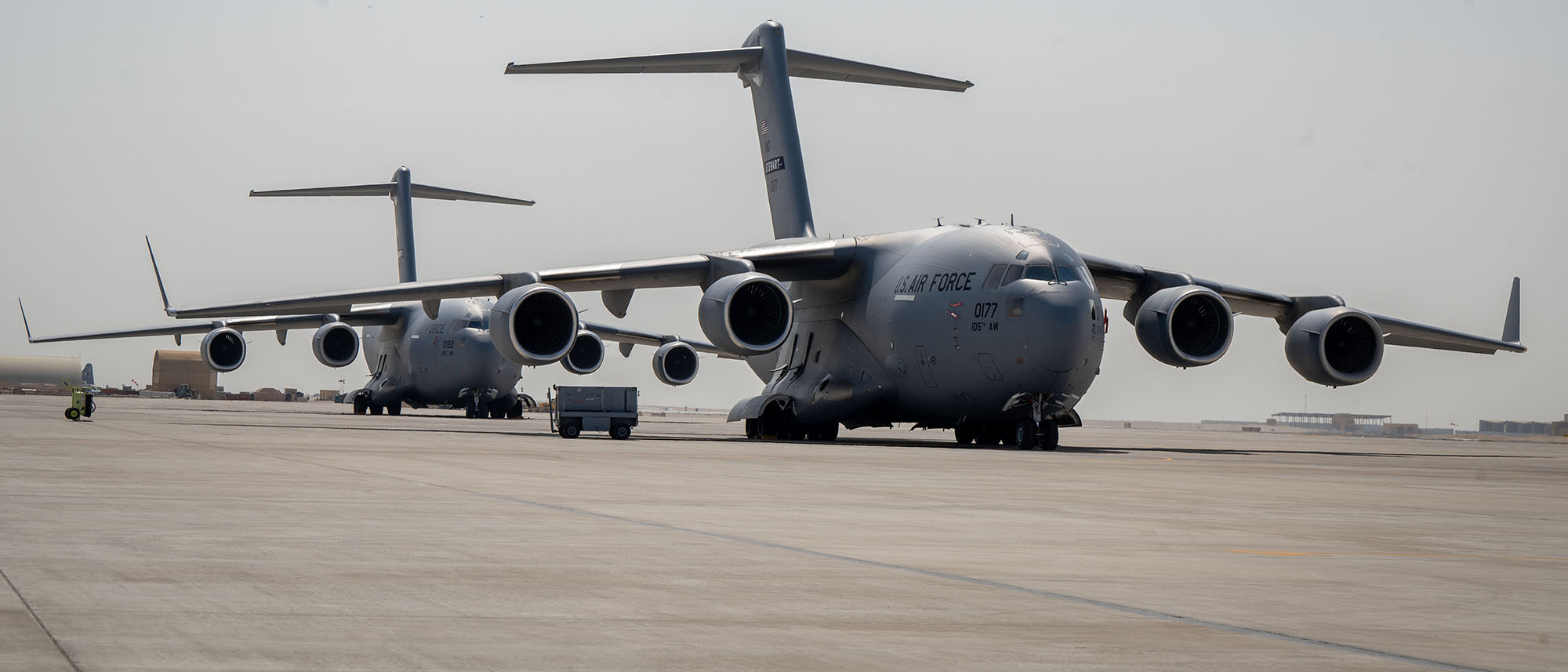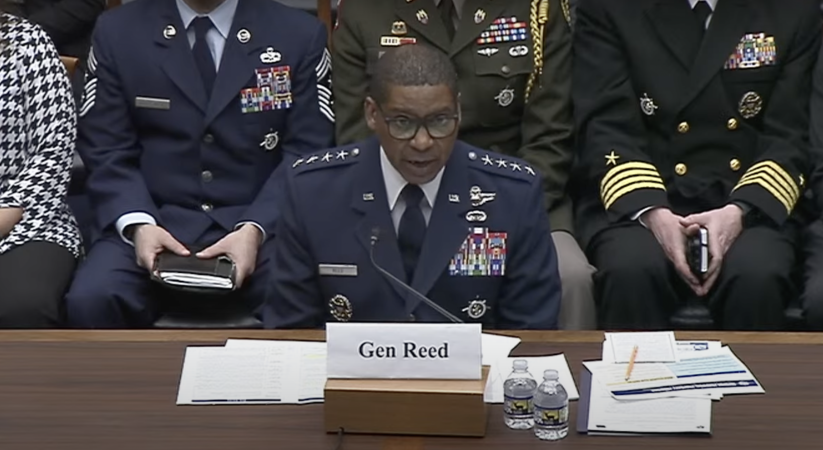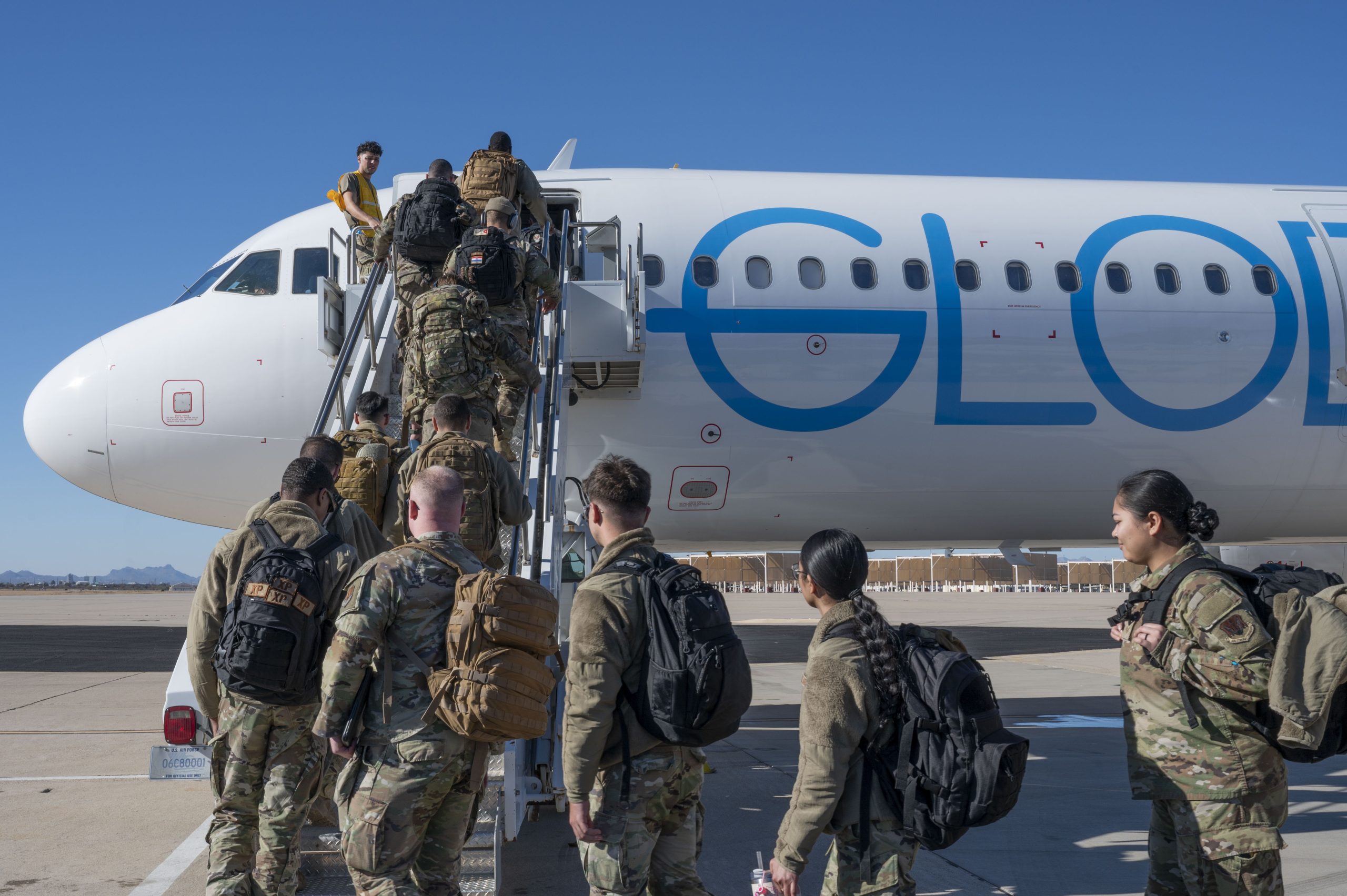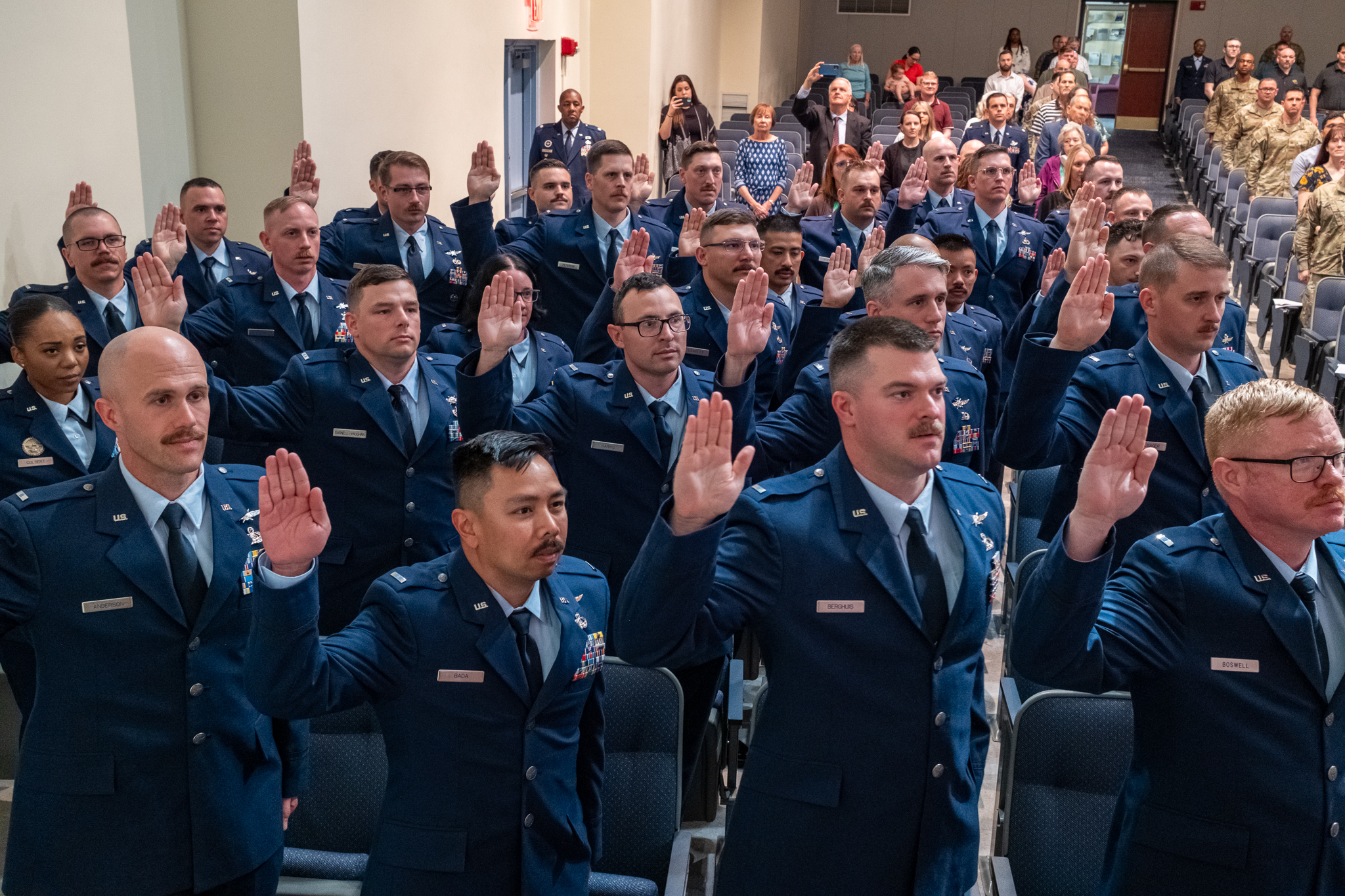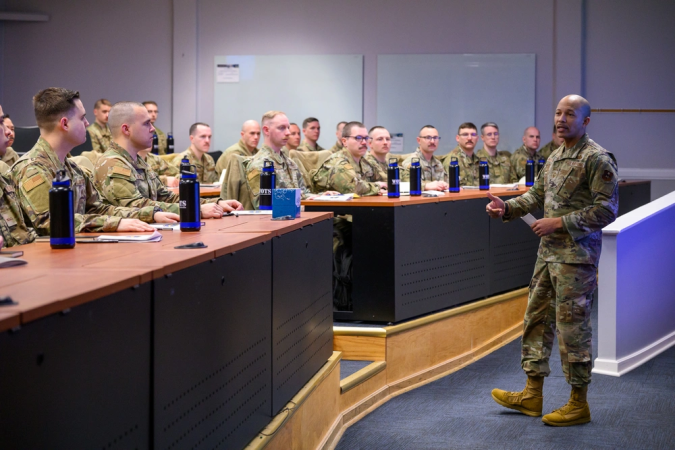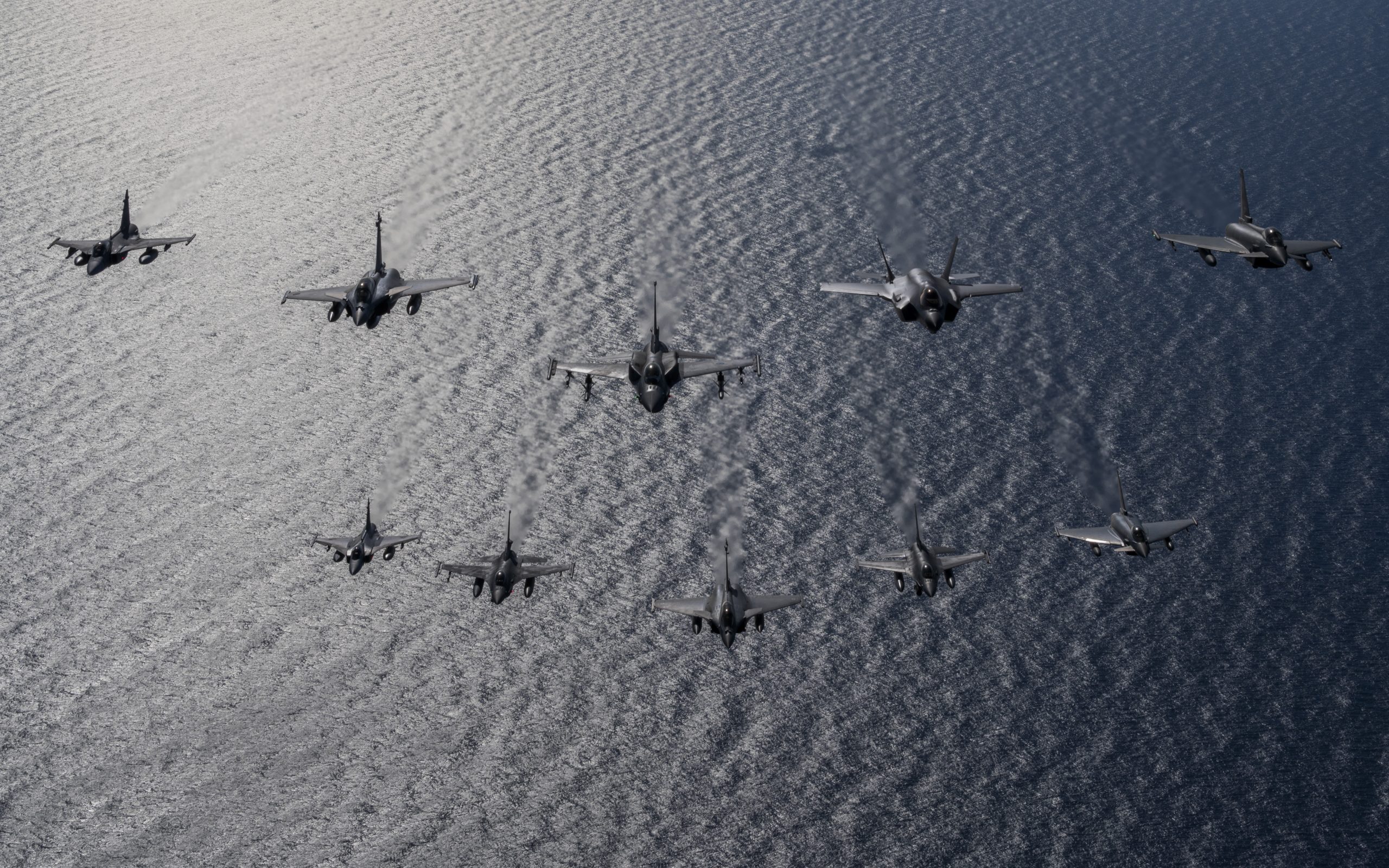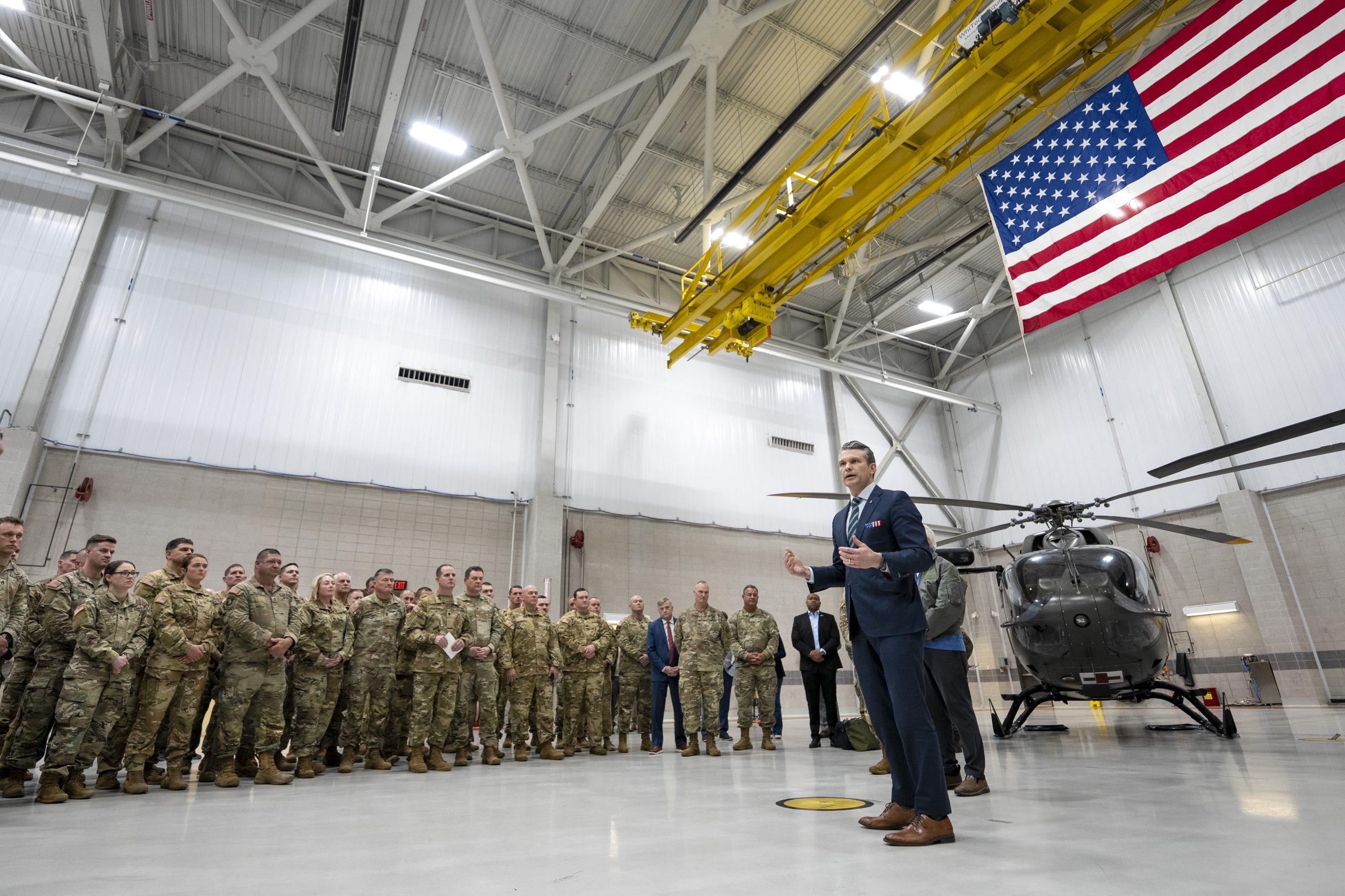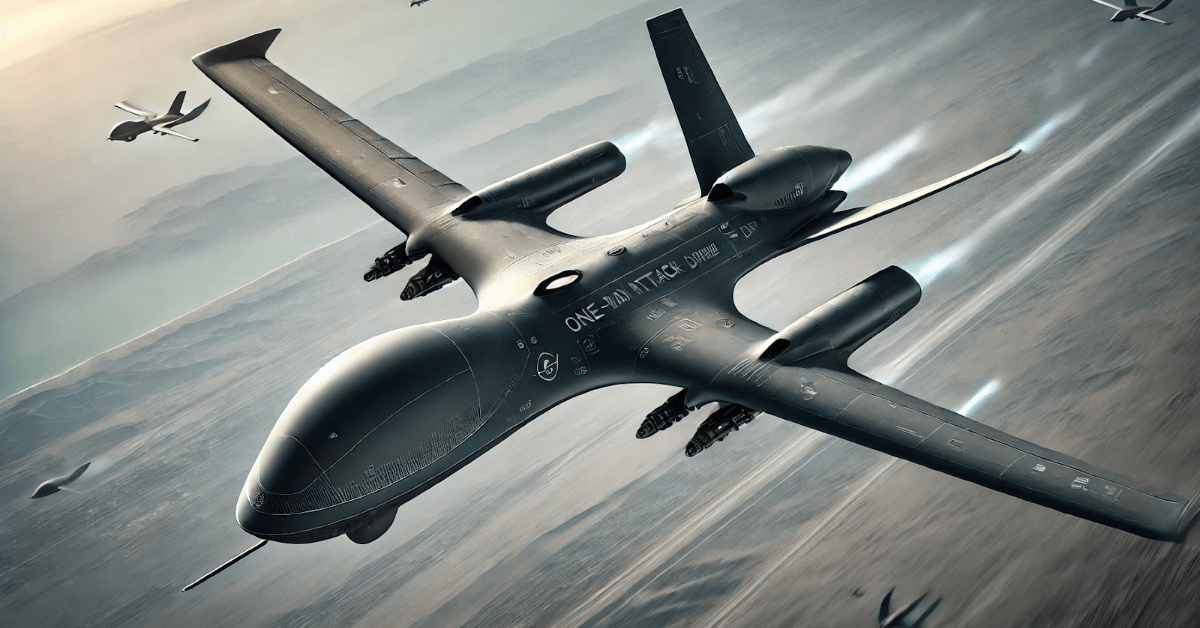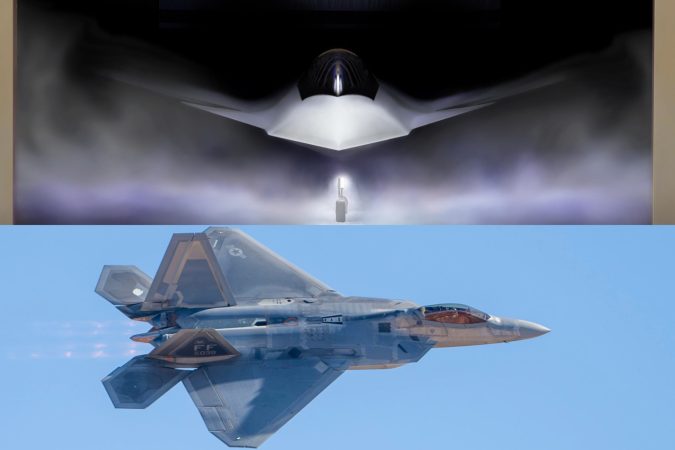After 42 years and more than 20,000 pilots, the last U.S. Air Force F-16 at Luke Air Force Base, Ariz., took off March 24 en route to its new home with the 16th Weapons Squadron at Nellis Air Force Base, Nev.
There are still F-16s at Luke: the Republic of Singapore Air Force owns several for training RSAF pilots and maintainers with Luke’s 425th Fighter Squadron, and Top Aces, the private “red air” contractor that acts as adversaries in training, also owns several F-16s at Luke. But the departure this week marks the end of an era for the base.
Luke has trained fighter pilots since it began in 1941, starting with propeller planes such as the P-40, P-38, and P-51, then on to jets including the F-84, F-100, F-4, and F-15 before training its first F-16 pilots in 1983. By 2005, the Luke-based 56th Fighter Wing was the world’s largest fighter unit, with eight squadrons flying 189 F-16s.
Luke, in the words of author Peter Aleshire in his 2004 book Eye of the Viper: The Making of an F-16 Pilot, was where “drooly, diapered, dumbass, would-be fighter pilots get stripped down, disassembled, spun, bounced, and stress-tested—before being reassembled into Viper pilots—slit-eyed, ice-cold killers.”
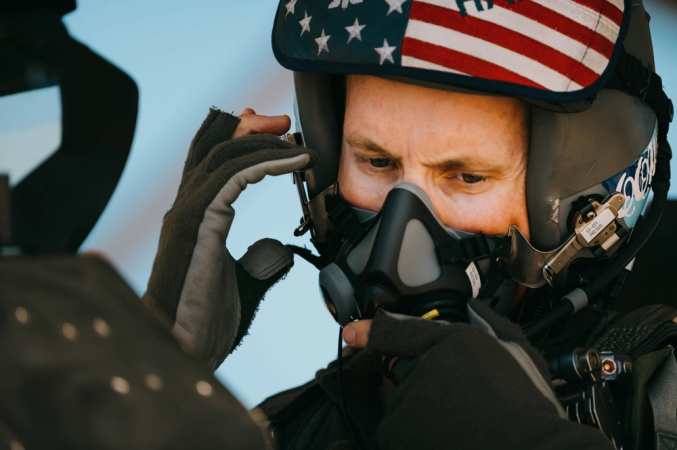
It takes a high-performing student to pass through undergraduate pilot training and introduction to fighter fundamentals before learning to fly the F-16. But the pace and intensity of the 37-week long F-16 Basic Course (also called B-Course) pushes even the most high-achieving students.
“F-16 students begin their journey into F-16 being inundated with a crushing load of classroom academics that doesn’t abate through the duration of the 7-month course,” Air Education and Training Command wrote on its website.
The F-16’s departure from the base started in 2014, with the arrival of the first F-35. Now there are five F-35 training squadrons at Luke, soon to be six as the 309th Fighter Squadron switches to the fifth-generation aircraft.
Lt. Col. Michael Ress, commander of the 309th, flew the squadron’s last Viper to Nellis. The final class of F-16 student pilots graduated from the squadron in September, with the last local training sortie in February.
“The F-16 has been the backbone of the Air Force for over 50 years,” Ress said in a press release. “Fourth-generation aircraft like the F-16 will continue to be the capacity, while fifth-generation aircraft like the F-35 is now the capability.”
The F-16 training mission continues at Morris Air National Guard Base, Ariz.; Holloman Air Force Base, N.M.; and Kelly Field Annex of Joint Base San Antonio-Lackland, Texas. Luke’s 425th Fighter Squadron will move to Ebbing Air National Guard Base, Ark., in the next few years.
“While the F-16’s chapter at Luke AFB comes to a close, our mission remains unchanged,” the 56th Fighter Wing wrote in the press release. “Luke will continue to train the world’s greatest fighter pilots and combat-ready Airmen, now with the unmatched capabilities of the F-35.”
